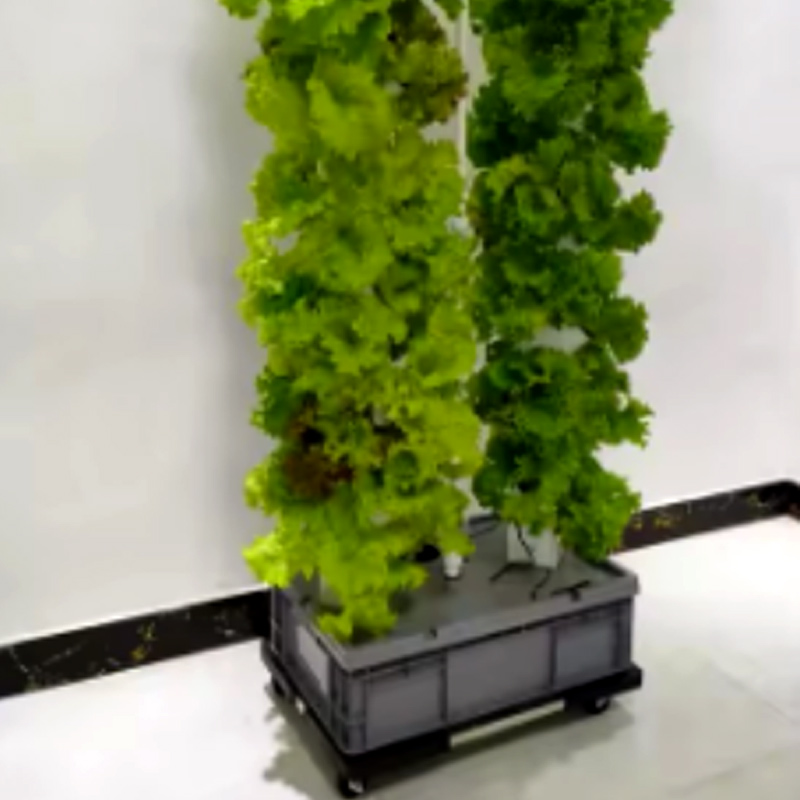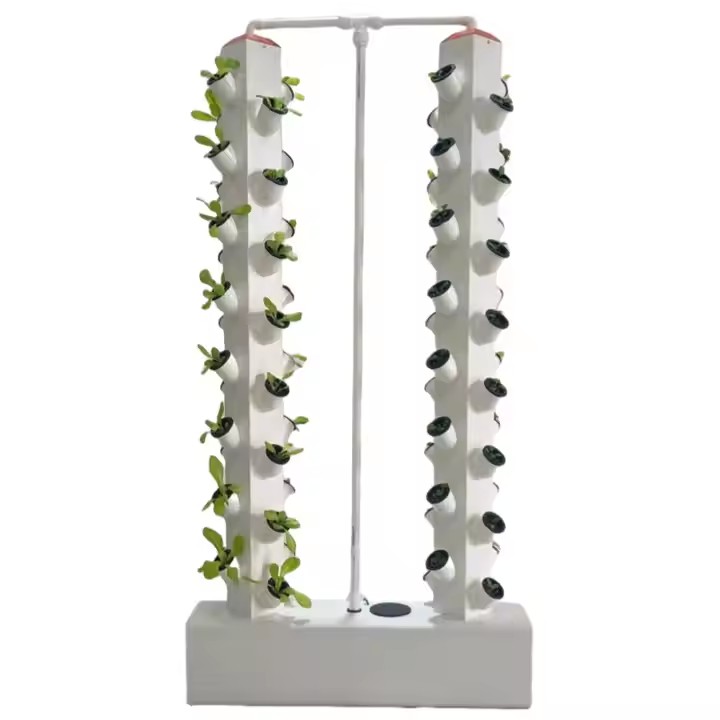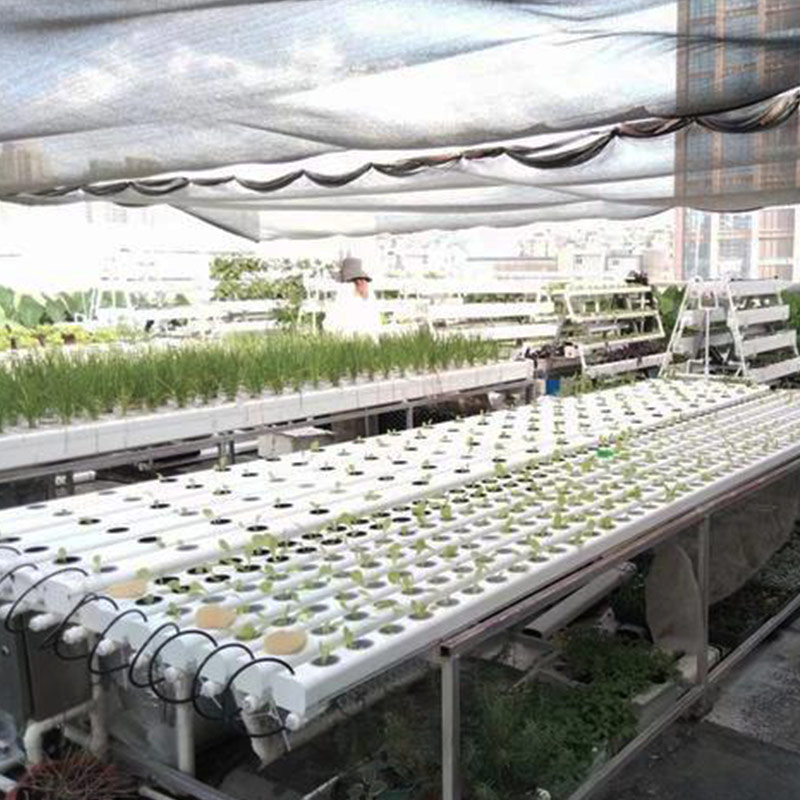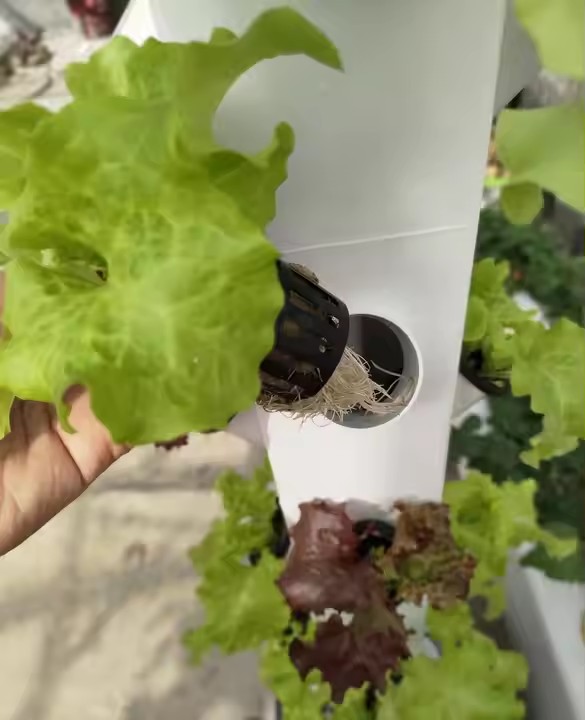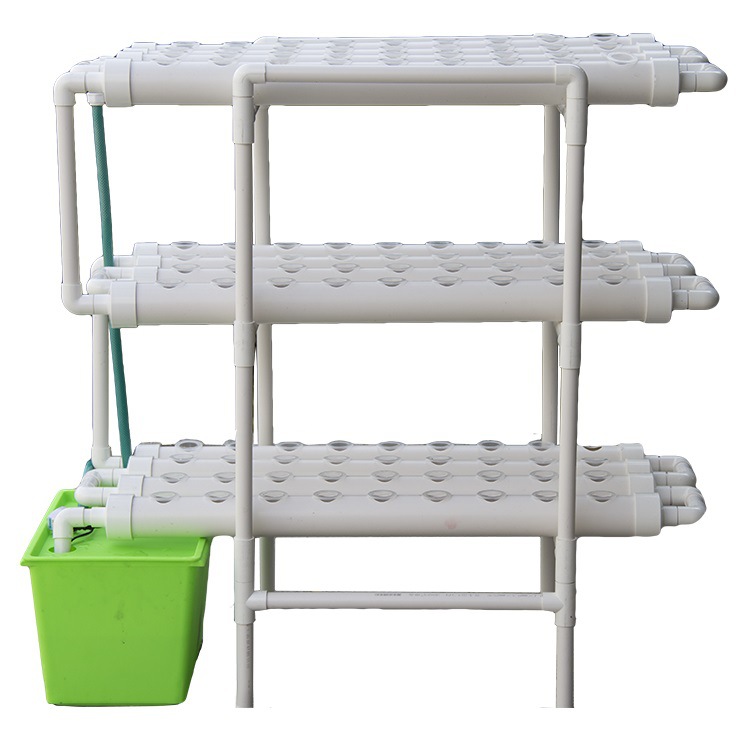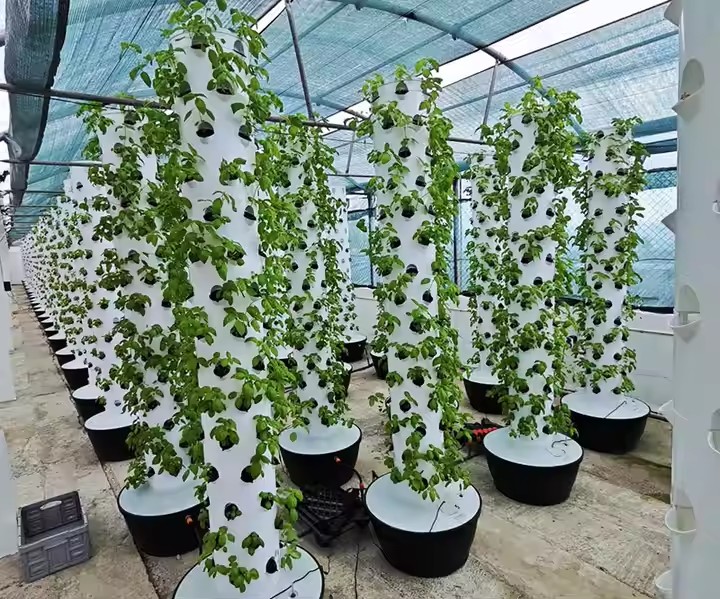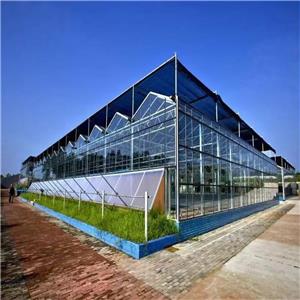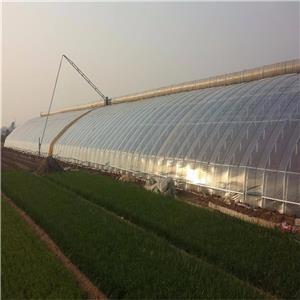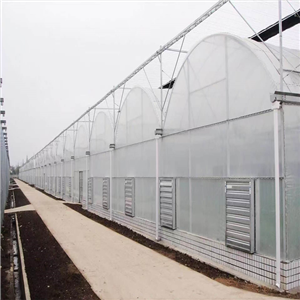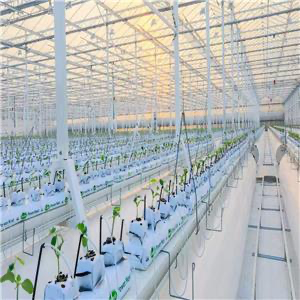
Vertical Hydroponic Planting Tower is an innovative, space-saving farming system that grows plants vertically without soil, using nutrient-rich water. Ideal for urban environments, it maximizes limited space by stacking multiple planting layers, enabling high-yield cultivation of herbs, vegetables, and flowers.
Vertical Hydroponic Planting Tower
------The Future of Sustainable Agriculture
1. Introduction
With the global population rising and arable land shrinking, traditional farming methods are struggling to meet food demands. Urbanization, climate change, and water scarcity further complicate food production. In response, Vertical Hydroponic Planting Towers have emerged as an innovative, sustainable farming solution.
These towers allow plants to grow without soil, using nutrient-rich water in a space-efficient vertical structure. They are ideal for urban farming, home gardening, and commercial agriculture, offering higher yields with fewer resources.
This comprehensive guide explores how vertical hydroponic towers work, their benefits, setup process, and their role in the future of agriculture.
2. What is a Vertical Hydroponic Planting Tower?
A Vertical Hydroponic Planting Tower is a stacked farming system where plants grow vertically in a soilless medium, receiving nutrients through a water-based solution. Unlike traditional farming, which requires large horizontal spaces, these towers maximize vertical space, making them perfect for urban environments, rooftops, and indoor farming.
Key Characteristics:
No soil required – Uses hydroponic growing techniques.
Modular design – Can be expanded vertically for higher yields.
Water-efficient – Recirculates water, reducing waste.
Controlled environment – Optimizes light, nutrients, and pH for faster growth.
3. How Does It Work?
Vertical hydroponic towers operate on the principle of hydroponics—growing plants in nutrient-enriched water instead of soil. The system typically includes:
A reservoir holding nutrient-rich water.
A pump to circulate water to the top of the tower.
Growing channels or pods where plants are placed.
A drip or spray system to distribute water evenly.
LED grow lights (for indoor setups) to ensure proper photosynthesis.
Water flows from the top, trickling down through plant roots, and is then collected and recirculated, minimizing waste.
4. Key Components of a Hydroponic Tower
A well-functioning hydroponic tower consists of:
Tower Structure – Made from PVC, fabric, or food-grade plastic.
Growing Medium – Coconut coir, perlite, or rockwool to support roots.
Water Pump & Tubing – Ensures continuous water flow.
Nutrient Solution – Contains essential minerals (N-P-K, calcium, magnesium).
Lighting System – LED or natural sunlight for photosynthesis.
pH & EC Meters – Monitors water quality for optimal growth.
Timer – Automates watering cycles.
5. Types of Hydroponic Systems Used in Vertical Towers
Several hydroponic techniques can be applied:
Nutrient Film Technique (NFT) – A thin film of water flows over roots.
Deep Water Culture (DWC) – Roots are submerged in oxygenated water.
Aeroponics – Roots are misted with nutrient solution.
Drip System – Water drips slowly onto plant roots.
Each method has pros and cons, with NFT and aeroponics being the most efficient for vertical setups.
6. Advantages of Vertical Hydroponic Towers
✅ Space Efficiency – Grows more food in less area.
✅ Water Savings – Uses up to 90% less water than soil farming.
✅ Faster Growth – Plants grow 30-50% faster due to optimized nutrients.
✅ No Weeds or Soil Pests – Reduces the need for pesticides.
✅ Year-Round Production – Indoor systems are unaffected by seasons.
✅ Higher Yields – More plants per square foot than traditional farming.
7. Challenges and Limitations
⚠ Initial Cost – Higher setup cost than traditional gardening.
⚠ Power Dependency – Requires electricity for pumps and lights.
⚠ Technical Knowledge Needed – Requires monitoring of pH, nutrients, and lighting.
⚠ Maintenance – Regular cleaning to prevent algae and clogs.
8. Best Plants to Grow in a Hydroponic Tower
? Leafy Greens – Lettuce, kale, spinach
? Herbs – Basil, mint, cilantro
? Fruiting Plants – Strawberries, cherry tomatoes, peppers
? Microgreens & Sprouts – Fast-growing and nutrient-dense
Avoid large-root plants like potatoes and corn.
9. Setting Up a Vertical Hydroponic Tower
Step-by-Step Guide:
Choose a Location – Indoors (with grow lights) or outdoors (with sunlight).
Assemble the Tower – Follow manufacturer instructions.
Install Water Pump & Tubing – Ensure proper circulation.
Add Growing Medium & Plants – Seedlings or clones work best.
Mix Nutrient Solution – Follow recommended ratios.
Set Up Lighting & Timer – 12-16 hours of light per day.
Monitor pH & EC Levels – Adjust as needed.
10. Maintenance and Care
Daily: Check water levels and pump function.
Weekly: Test pH & nutrient strength.
Monthly: Clean the system to prevent algae buildup.
As Needed: Prune plants and replace nutrient solution.
11. Commercial and Home Applications
? Home Use – Fresh herbs and veggies year-round.
? Urban Farming – Rooftop and balcony gardens.
? Commercial Farms – High-density production for restaurants & supermarkets.
? Disaster Relief & Food Deserts – Portable, sustainable food sources.
12. Environmental and Economic Benefits
Reduces Carbon Footprint – Less transportation needed.
Saves Water – Critical in drought-prone areas.
Lowers Food Costs – Long-term savings on groceries.
Encourages Local Food Production – Supports food security.
13. Future Trends in Vertical Hydroponics
? AI & Automation – Smart sensors for real-time monitoring.
? Solar-Powered Systems – Reducing energy dependency.
? Modular & Scalable Designs – For large-scale urban farming.
? Integration with Smart Homes – App-controlled hydroponic systems.
14. Conclusion
Vertical hydroponic planting towers represent a revolution in agriculture, offering a sustainable, efficient, and scalable way to grow food. Whether for home use, urban farming, or commercial production, they address critical challenges like land scarcity, water waste, and food security.
As technology advances, these systems will become even more accessible, helping to feed the growing global population while protecting the planet.

